The buffalo has long been a symbol of strength, power, and spirituality in Native American cultures across North America. For centuries, the buffalo played a vital role in the everyday lives of Native American societies, providing food, clothing, and shelter, as well as serving as a spiritual and cultural icon. Despite the devastating impact of commercial hunting and European settlement on buffalo populations and Native American communities, the enduring legacy of the buffalo continues to inspire and shape Native American cultures today. In this article, we will explore the importance of the buffalo in Native American societies, from its historical and cultural significance to its impact on the survival and identity of Native American communities.
Introduction to the role of the buffalo in Native American cultures
For centuries, the buffalo has been one of the most important animals to the Native American people. It played an integral role in their daily lives, providing food, shelter, and clothing. The buffalo was not only a source of sustenance, but it also had spiritual and cultural significance to Native American tribes across North America.
Overview of Native American cultures and their reliance on the buffalo
Native American cultures in the Great Plains of North America were particularly reliant on the buffalo. Tribes such as the Sioux, Blackfeet, and Comanche relied on them for their existence. The buffalo provided meat for food, hides for clothing and shelter, and bones for tools and weapons. It's no exaggeration to say that the buffalo was the lifeblood of these cultures.
Historical significance of the buffalo to Native American societies
Origins of the buffalo and the arrival of Native Americans in North America
The American buffalo, also known as bison, are native to North America and have been around for thousands of years. As the Ice Age ended, humans started to migrate to North America, and the buffalo became an important part of their lives. The arrival of Native Americans in North America only further solidified the importance of the buffalo.
The integration of the buffalo in Native American cultures and traditions
Native American tribes integrated the buffalo into their daily lives in many ways. Tribes would use nearly every part of the animal, from its meat to its bones and hide. The buffalo was also central to their spiritual beliefs, with many tribes considering the animal sacred and a symbol of strength and power.
Spiritual and cultural beliefs surrounding the buffalo
The buffalo as a sacred animal in Native American religions
In many Native American religions, the buffalo was seen as more than just an animal. It was believed to have special powers and was considered sacred. Many tribes had religious ceremonies centered around the buffalo, such as the Lakota Sundance, which included a dance that was meant to honor and connect with the spirit of the buffalo.
Symbolism and myths related to the buffalo in Native American cultures
The buffalo was also significant in Native American folklore and mythology. The animal was often used to represent strength, courage, and abundance. Many stories and legends center around the buffalo, such as the tale of White Buffalo Calf Woman, who brought the Lakota people the sacred pipe and taught them the Seven Sacred Rites.
The buffalo as a source of sustenance and survival
Traditional hunting techniques and practices used by Native Americans
Native American tribes had developed hunting techniques and practices that allowed them to hunt buffalo sustainably. These techniques included using horses to surround and stampede buffalo, as well as using bows and arrows and spears to take them down.
The nutritional and medicinal value of the buffalo for Native American societies
The buffalo was not only a source of food, but it also had medicinal properties. The bones and hooves of the animal were used to make broths and teas that were believed to have healing properties. Additionally, the buffalo provided valuable nutrients such as protein and iron that were essential to the health and well-being of Native American tribes.
The impact of buffalo hunting on Native American communities
The buffalo, also known as bison, played a crucial role in the lives of Native American communities for centuries. These animals provided ecological and economic benefits that sustained entire societies. For many tribes, the buffalo was a sacred animal that symbolized strength, wisdom, and abundance. Hunting them was not taken lightly and was done in a sustainable way that respected the animal's spirit and the environment.
The ecological and economic benefits of the buffalo for Native Americans
The buffalo was a keystone species that supported the ecological balance of the prairie ecosystem. They helped fertilize the soil, spread seeds, and their grazing patterns prevented the overgrowth of grasses, which could lead to wildfires. In addition to their ecological importance, the buffalo was a source of food, clothing, shelter, and tools for Native American communities. Their hides were used for clothing, teepees, blankets, and drums, while their bones and sinew were used for tools.
The negative effects of European settlement and commercial hunting on buffalo populations and Native American societies
The arrival of European settlers had a devastating effect on buffalo populations and Native American societies. Commercial hunting and westward expansion disrupted the ecological balance of the prairie ecosystem, leading to a sharp decline in the buffalo population. This decline had a catastrophic impact on Native American communities as their main source of food and resources disappeared. The loss of the buffalo also had devastating cultural and spiritual effects on Native American societies, breaking the bond between the people and their sacred animal.
The near extinction of the buffalo and its effect on Native American societies
By the late 1800s, the buffalo population had dwindled to near extinction due to commercial hunting and government policies that aimed to eliminate Native American cultures. The eradication of the buffalo was a deliberate tactic to starve Native Americans and force them onto reservations. This led to a loss of traditional practices and a disconnect from the land.
The devastating impact of buffalo population decline on Native American cultures and traditions
The loss of the buffalo had a devastating impact on Native American cultures and traditions. Practices such as the buffalo hunt and the Sun Dance, which were central to many tribes, were threatened with extinction. Many Native Americans were forced to give up their way of life and assimilate into Western society. The psychological impact of the loss of the buffalo and the forced assimilation of Native Americans is still felt today.
The role of Native American leaders and activists in preserving and restoring buffalo populations
Native American leaders and activists played a significant role in preserving and restoring buffalo populations. The efforts of individuals such as Chief Sitting Bull, Black Elk, and John Wooden Legs helped to raise awareness of the importance of buffalo and the need for conservation efforts. Today, many tribes have established their own buffalo herds and are working to restore the ecological balance of the prairie.
Contemporary efforts to revive buffalo populations and preserve Native American cultures
Despite the efforts to eradicate Native American cultures, many tribes are working to preserve their traditions and maintain a connection to the land. The restoration of buffalo populations is a crucial part of this effort.
The success of conservation and restoration programs in increasing buffalo populations
Conservation and restoration programs have been successful in increasing buffalo populations. The American Bison Society, established in the early 1900s, helped to restore the buffalo population in Yellowstone National Park. Today, many tribes have established their own conservation programs and buffalo herds.
The cultural and economic benefits of restoring buffalo populations for Native American communities
The restoration of buffalo populations has cultural and economic benefits for Native American communities. It allows for the preservation of traditional practices and helps to maintain a connection to the land. Buffalo also provide a source of food and income for many tribes.
Conclusion: The enduring legacy of the buffalo in Native American cultures
The buffalo has played a crucial role in the lives of Native American communities for centuries. Despite efforts to eradicate their culture and traditions, Native Americans have persevered and are working to restore the ecological balance of the prairie and revive their connection to the land.
The continued importance of the buffalo for contemporary Native American societies
The buffalo remains an important symbol of strength, resilience, and cultural identity for contemporary Native American societies. Its restoration is a crucial part of the efforts to preserve and celebrate their heritage.
The need to recognize and respect the significance of the buffalo in Native American cultures
It is important to recognize and respect the significance of the buffalo in Native American cultures. By restoring the buffalo population and supporting efforts to preserve their traditions, we can help to honor the enduring legacy of this sacred animal.In conclusion, the buffalo remains a symbol of strength and resilience for Native American cultures across North America. As we continue to recognize the significance of the buffalo in Native American societies, it is essential to acknowledge the ongoing efforts to restore and protect buffalo populations and to support the cultural and economic sustainability of Native American communities. The buffalo's legacy endures, not only as a powerful symbol of the past, but also as a source of inspiration and hope for the future of Native American cultures.
FAQ
Why is the buffalo important to Native American cultures?
The buffalo plays a vital role in the everyday lives of Native American societies, providing food, clothing, and shelter, as well as serving as a spiritual and cultural icon. The buffalo is a symbol of strength, power, and resilience that has endured for centuries.
What is the historical significance of the buffalo to Native American societies?
For centuries, the buffalo was a key component of Native American cultures, providing sustenance, clothing, and shelter for many tribes. The buffalo also played an essential role in Native American spiritual beliefs and practices, serving as a symbol of strength, power, and connection to the natural world.
What is the current status of buffalo populations in North America?
Buffalo populations in North America have increased in recent years, due in part to conservation and restoration efforts. However, they remain far below historical levels, and many Native American communities continue to advocate for greater protections for the buffalo and their habitats.
How can I support the preservation of Native American cultures and the buffalo?
There are many ways to support the preservation of Native American cultures and the buffalo, including donating to organizations that work to protect buffalo populations and promote cultural sustainability, learning more about the history and culture of Native American societies, and supporting Native American-owned businesses and initiatives.
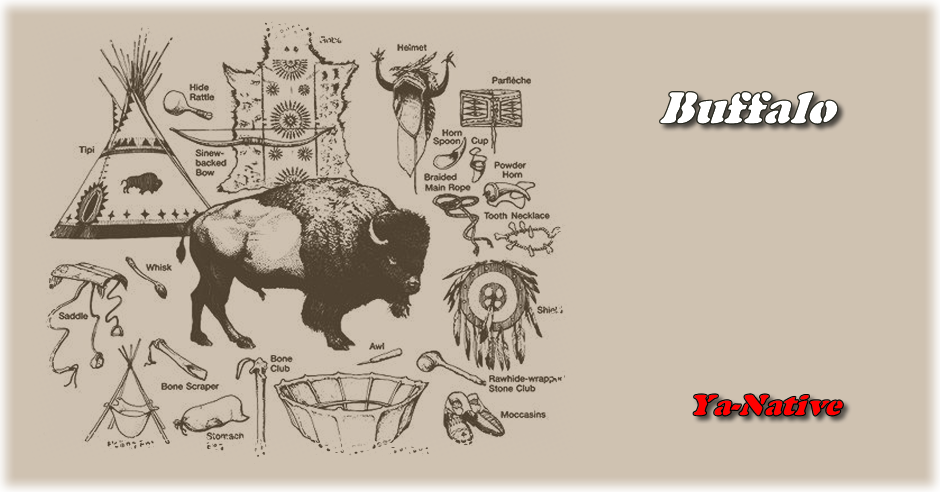
The buffalo is a symbol of abundance and manifestation. Their large heads represent intelligence of a higher order and their strong bodies ground them to the earth. They are the uniting force between the mundane and the divine and hold the teachings of right action joined with prayer.Both the bulls and the cows have horns as well as humped shoulders. Horns grow out of the head and extend to the sky indicating a connection with a higher intelligence. Humps are often symbolic of stored energy locked within the body. The buffalo's humps are located at the shoulders.
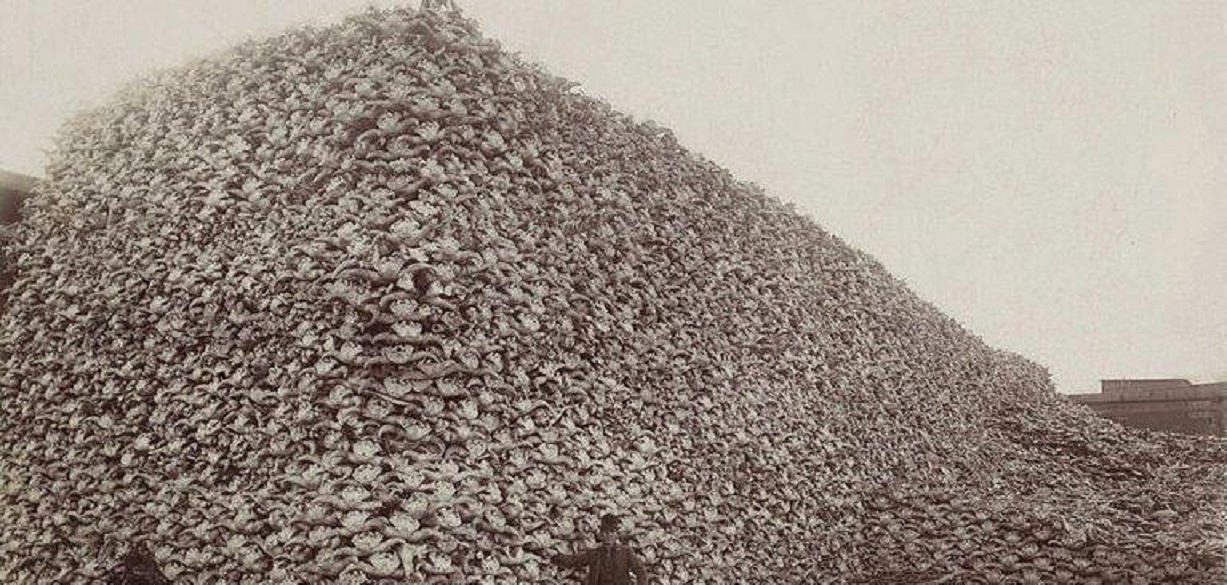
In man the shoulders hold our personal energy which expresses itself through our hands. Whatever we touch or hold onto is connected to the energy stored in the shoulders. Shoulders carry responsibility or joy. What we carry within is manifested outwardly. The buffalo teaches us how to eliminate our burdens by directing our energy in a balanced way. When defending against danger, the cows will form a defensive circle around the calves and the bulls will form a circle around the cows. This symbolizes the buffalo's mutual respect for one another as well as their protective instincts to defend and honor life.
To the Plains Indians it was a symbol of sacred life and abundance. It gave the gift of life to others by sacrificing its own. It provided meat for food and hides for clothing and shelter. When tribes prepared for a buffalo hunt prayers of gratitude were offered up to great spirit. After the hunt ceremonies were performed that honored the buffalo's spirit. Without the aid of buffalo these tribes would not have survived the harsh winters. Buffalo's can be unpredictable and dangerous when provoked. Those with this totem need to remember to see the good in all things and not let their frustration store up inside them. Tai Chi or martial arts would be of benefit on a daily basis.
The buffalo reminds us to give thanks for what we have, to respect all life forms and to honor the integrity of our own divine essence. It is a symbol of equality, sacrifice and service and can show us how to live in a state of understanding, acceptance and joy. It helps us release our self pity and awakens abundance within our consciousness. Buffalo is a powerful medicine to have and serves as a stepping stone towards healing our imperfections and reconnecting with mother earth and father sky.
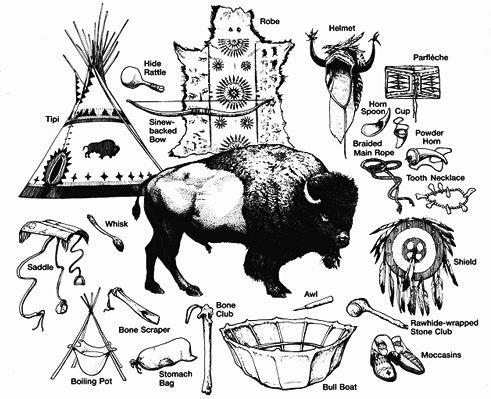
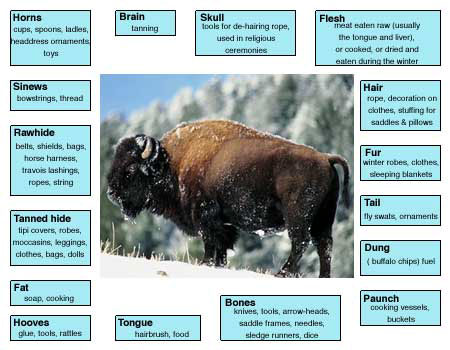
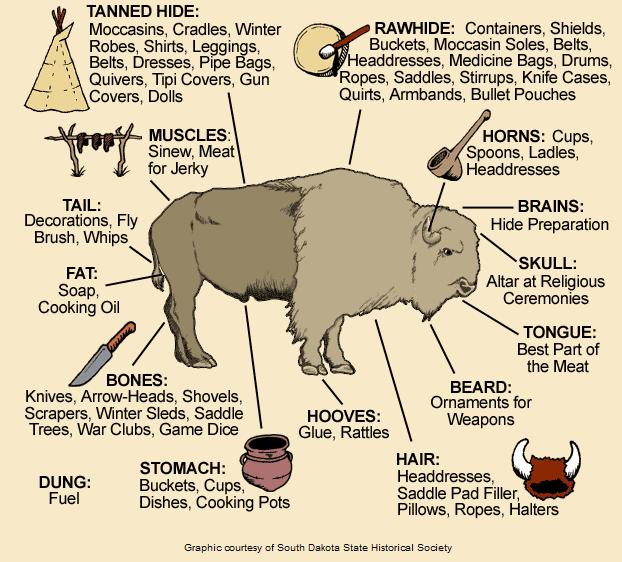
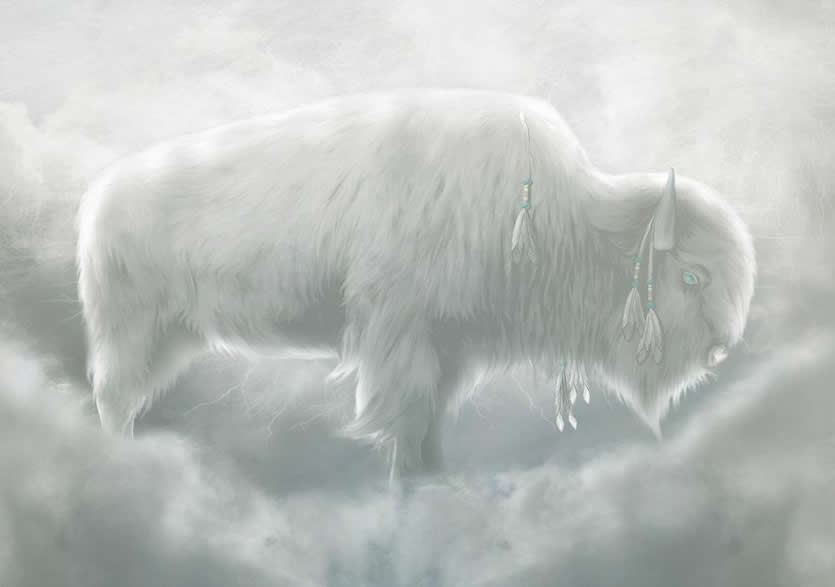
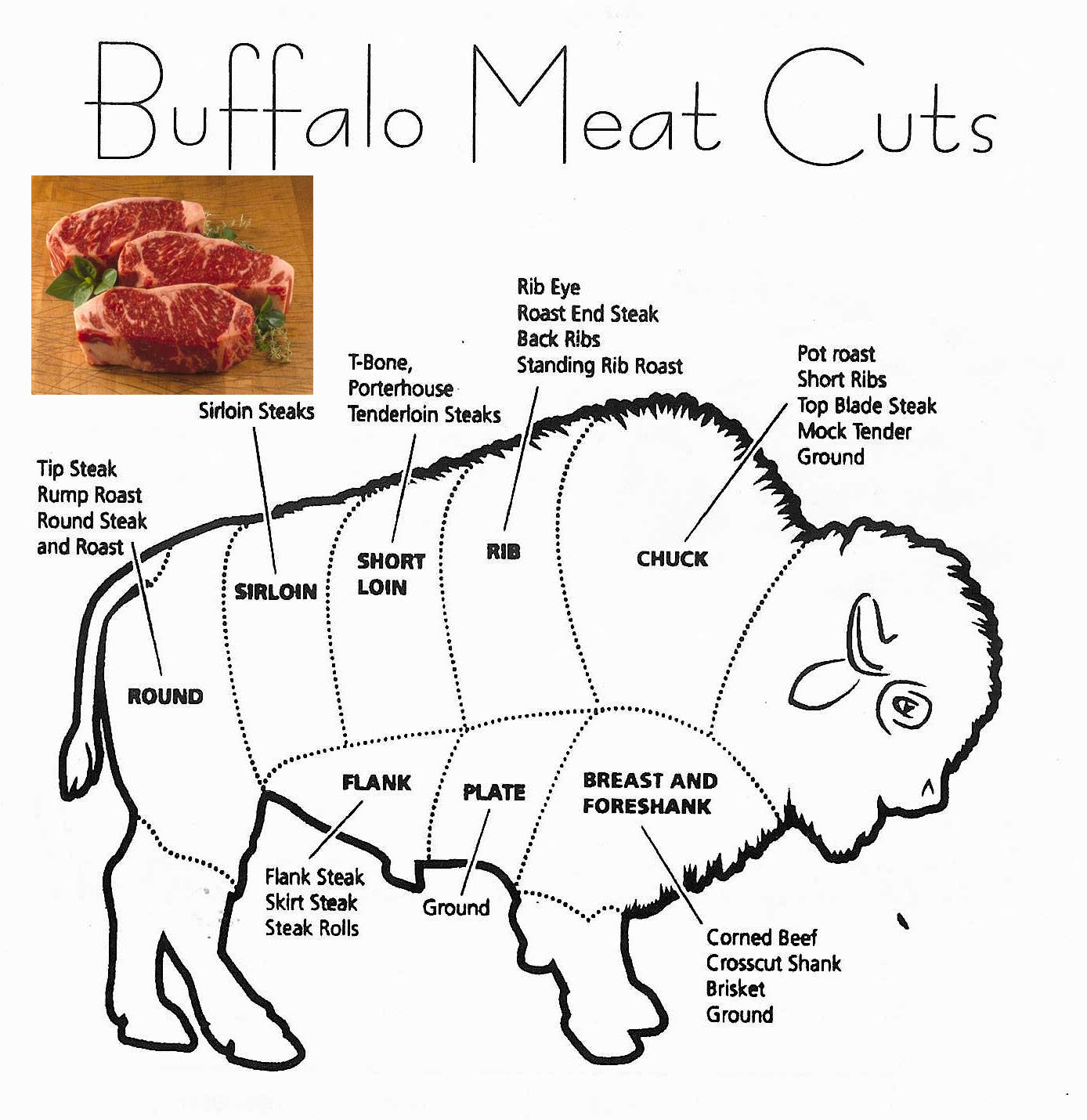
.jpg)
